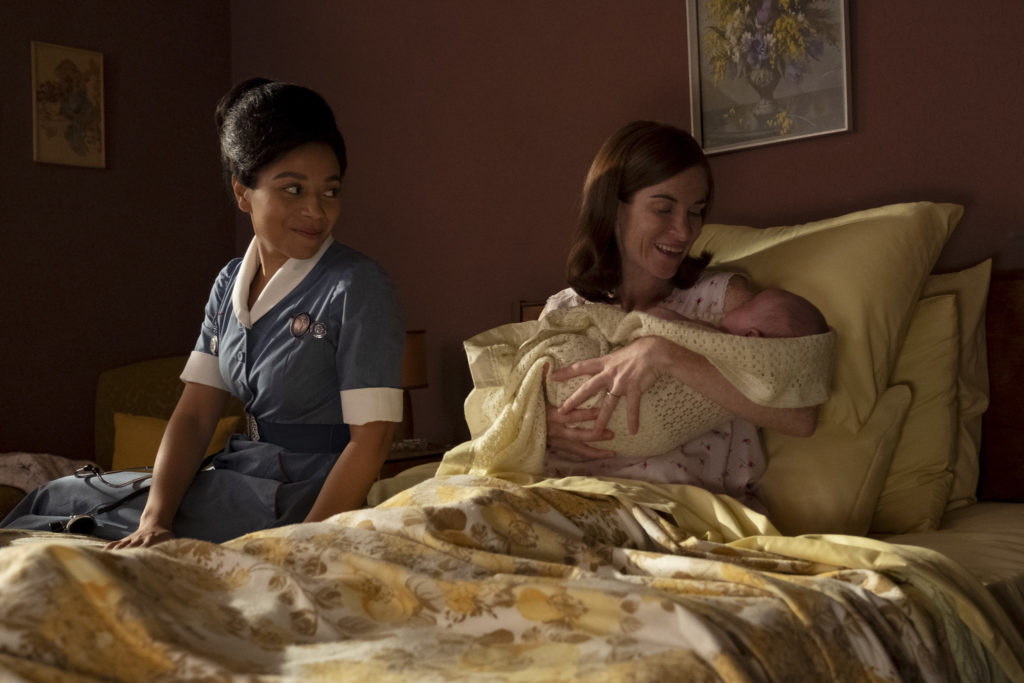
Call the Midwife is back for its ninth season and so are the faculty of the Vanderbilt University School of Nursing with a weekly guest blog. Watch the show Sundays at 7 p.m. through May 17, then read our blog each Monday morning for historical and contemporary context about the previous night’s episode. SPOILER ALERT: Some posts may contain plot details.
While I feel connected to the long tradition of midwives through history, the fact is I’m a modern practitioner. That means Call the Midwife is sometimes delightfully familiar to me, a fictional reflection of my day-to-day work world. Other times the show is a stunning reminder of how maternity care has changed over the past 60 years. This episode has several heartbreaking plotlines, but the story that made my jaw drop was Maureen’s.
In some ways Maureen’s birth story could be contemporary: a tired and eager third-time mom using castor oil to prompt labor; a fat, healthy baby born at home. The rest of the story is a historic relic, an outcome I’ve never seen in practice. Maureen’s baby, plump and beautiful, doesn’t nurse well. He develops blue coloring around his mouth – we call it central cyanosis – that alarms midwife Lucille and Dr. Turner. Baby Warren is quickly diagnosed with congenital heart disease, blindness, likely brain damage. A little sleuthing by the midwives identifies the cause: his mother’s infection with German measles during early pregnancy.
These days we call German measles by another name: Rubella. Rubella is a mild childhood viral infection, often asymptomatic, sometimes causing a fever and rash. Infection apart from pregnancy is mild, with only rare complications and fatalities. But infection during the first four months of pregnancy can be devastating to the developing fetus, causing stillbirth, preterm birth, deafness, blindness, heart defects. Maureen’s story demonstrates how insidious rubella can be: just another mild virus for small children, easily spread to the pregnant mother though perpetual close contact with her kiddos, travelling through the blood to the placenta and into the fetal bloodstream.
Maureen and Warren’s story wasn’t uncommon during this time. Fictional baby Warren was born in 1965, just after the worldwide rubella pandemic of 1964. During that year in the United States, 12.5 million cases of rubella infection caused approximately 11,000 fetal deaths and 20,000 babies with congenital rubella syndrome. The rubella vaccine was introduced in 1969, too late for Warren and the other tens of thousands of babies lost or damaged by the virus.
The rubella vaccine is a huge public health success story. It’s bundled with the measles and mumps vaccine and given universally to every baby and child. We test for rubella immunity at the beginning of every pregnancy and offer postpartum vaccination to women who aren’t immune. Thanks to widespread immunization, in 2015 rubella was declared completely eliminated from the Americas.
Because of this sea change in rubella infection, Warren’s story surprised me. It’s hard for this 21st-century midwife to remember that just 11 years prior to my own birth, rubella was still rampant. And yet it’s a fresh and familiar story: I watched this episode while I sheltered at home between hospital shifts, in the midst of our own pandemic of a virus without a treatment or vaccination. Won’t we be grateful for a COVID-19 vaccine, now that we’ve lived with the fear of contagious disease?

Kate Virostko, MSN, CNM, is a member of the Vanderbilt Nurse-Midwives & Primary Care for Women at Melrose, the clinical practice of the Vanderbilt University School of Nursing.
